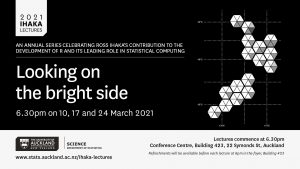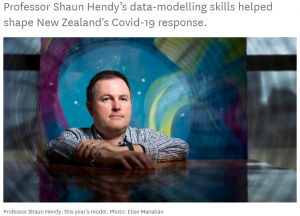It is with sadness we share news of the passing of Sir Vaughan Jones FRS Hon FRSNZ, aged 67, from the complications from an ear infection. Sir Jones will be remembered as a brilliant mathematician who made outstanding contributions to the field of mathematics, scientific research and higher education.
Sir Vaughan Jones was born and raised in New Zealand and went to the University of Auckland, graduating in 1973.
He moved overseas to earn his doctorate from the University of Geneva, and became a Professor of Mathematics at the University of California at Berkeley in 1985.
Despite his career overseas, Sir Vaughan worked hard to promote mathematics of the highest quality in Aotearoa. He has made key contributions to scientific research and post graduate education here in New Zealand and across the globe.
He is best known for the discovery of an unexpected link between the mathematical study of knots – a field dating back to the 19th century – and statistical mechanics, a form of mathematics used to study complex systems with large numbers of components. He found a new polynomial invariant for knots and links in three-dimensional space – something that had been missed by topologists during the preceding 60 years.
His discovery of what is now called the Jones polynomial had origins in the theory of von Neumann algebras. Friend and long-time colleague of Sir Vaughan, Distinguished Professor Marston Conder FRSNZ told the NZ Herald that his work has had a wide application.
“[His] work in theoretical mathematics, which basically helps distinguish one knot from another, had application in biological science, enabling scientists to identify whether two different types of RNA are from the same source,” Marston said.
“That was an outstanding achievement because from theoretical mathematics, his discoveries had real significance in an entirely different field.”
Because of this work, Sir Vaughan became the first ever winner from the Southern Hemisphere of the Fields Medal in 1990, which is widely regarded as the “Nobel Prize of Mathematics” because of the prestige it carries. He famously accepted the award in an All Blacks rugby jersey. He remains the only New Zealander to have won the Fields Medal.
In 1991, Sir Vaughan was the first winner of the Society’s prestigious Rutherford Medal. In 2012 the Society established the Jones Medal in his honour, for lifetime achievement in pure or applied mathematics or statistics.
Sir Vaughan was elected as a Fellow of The Royal Society, London in 1990 and elected as an Honorary Fellow of the Royal Society of New Zealand in 1991. In 2002 he was made a Distinguished Companion of the New Zealand Order of Merit (DCNZM) (later re-designated Knight Companion KNZM).
Our deepest condolences go out to the whānau and friends of Sir Vaughan – he has left a prominent mark on the academic community, one that will not be forgotten.
Sir Vaughan is survived by his wife, Martha Jones, and three children.









